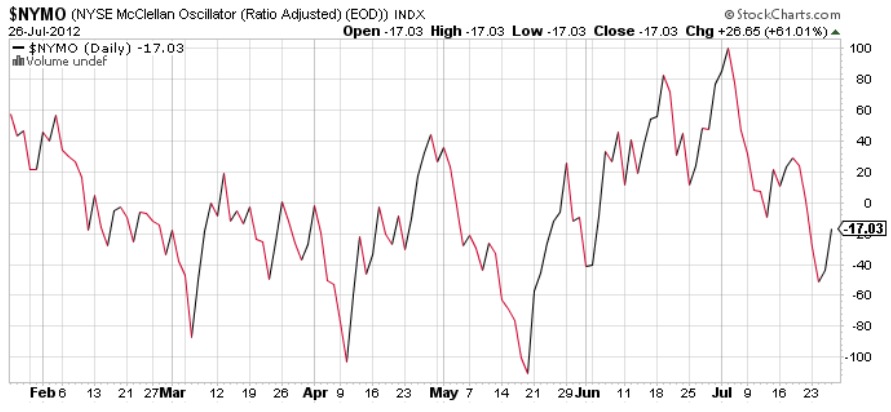My wife and kids and I like to play a game when we have friends over for dinner.
We’ll often do a ‘Pepsi Challenge’ where we all do a blind taste test of various foods. Like, for example, we once compared American Coca-Cola versus Mexican Coke (the latter is made with cane sugar instead of high fructose corn syrup).
Brownies from scratch versus Duncan-Hines. Kelloggs’ Froot Loops versus MaltOMeal’s Tootie Fruities.

Hydrox Nostalgia
And my personal favorite: Oreos versus Hydrox. I grew up eating Hydrox and was disappointed when they were discontinued in 1999.
But in 2009, then-brand owner Kellogg’s (K) brought them back for a limited engagement so of course we had to compare.
In my memory, Hydrox was better – not as sweet and a little crunchier – but our little parlor game showed that I liked Oreos better. Argh!
Fake Burgers
But we’ve never done this taste test with real hamburgers and the various meat substitute burgers like Gardenburgers or Boca Burgers or Morningstar Farms Veggie Burgers. Why? Because of course they aren’t even close to the real thing.
But that’s not to say we don’t like “fake” burgers. We do. Because it’s all about expectations: we don’t expect a fully-dressed Gardenburger to make us forget about a Whopper down at BK. It’s tasty enough for us on its own terms.
And tasty for our kids too. Meat substitutes are a common enough protein on our dinner table that we don’t even think of them as substitutes.
For example, we use Beyond Meat Beef Crumbles in tacos and burritos because, let’s face it, most of the taste profile in those Tex-Mex dishes is from the sauces and spices.
Food Tech
Why does this matter? Because of two dynamics going on right now.
First is the development of alternative meats that are nearly indistinguishable from their real counterparts. Perhaps the best known of these is from Impossible Foods, a Bay Area start-up that has literally engineered a burger that some claim is indistinguishable from the real thing.
These aren’t just close-one-eye-and-squint-with-the-other ‘Nearburgers’ made from brown rice and mushrooms.
No, they are the result of some very clever science that I’d need a chemistry degree to fully understand. But apparently they work, and on several levels.
Ecological Balance
And that’s where the second dynamic comes in: the growing awareness of the ecological impact of raising animals to feed ourselves.
According to the United Nations, 33% of arable land worldwide is used to grow feed for livestock – more than the additional land needed to graze that same livestock.
And all those animals produce 14.5% of the world’s greenhouse gas (GHG) emissions – much of it methane, which on a molecular level has 25 times the GHG impact as carbon dioxide.
But wait: According to Impossible Foods, their lab-created, factory-made, plant-based burger “uses a 20th of the land required for feeding and raising livestock and uses a quarter of the water, while producing an eighth of the greenhouse gases” when compared to a traditional beef patty of the same weight.
Did somebody say, “win-win?” Or did somebody say, “not so fast!” Because not even Impossible Foods has fully crossed the Uncanny Valley separating its burger from a real beef hamburger.
And the perception is that all those environmental benefits will only arrive when the fake is indistinguishable from the real. But I think that is short-sighted.
Social Benefits
So where does that leave us? Well Sherman, set the WABAC machine to 1967 so we can learn from Procter & Gamble’s (PG) introduction of Pringles potato chips. The success of Pringles was due in part to P&G’s canny marketing campaign: they never claimed the new chips were better tasting, just different.
Consumers liked them because they were salty, greasy and cheap; P&G liked them because they were profitable and offered immense brand leverage (wasabi flavor, anyone?).
Synthetic Meats
With so much social benefit to reducing the environmental impact of livestock, and so much money to be made from factory-made burgers, Impossible Foods and its ‘fake meat’ competitors should learn from Pringles and convince consumers to value their neo-meat for what it is (tasty, cheap and virtuous) and not curse it for what it isn’t (a Big Mac).
I think that Impossible Foods is likely to go public in the next 12-18 months. Competitors like Beyond Meat, Memphis Meats and Mosa Meat will be watching Impossible Foods closely as they move forward with their own growth.
Along with offering environmentally friendly and potentially far more cost effective protein than traditional sources, these companies can count on another advantage: Beef, chicken, pork and other real meat is done improving and will taste the same from this point forward.
But synthetic meats will continue to get better. And cheaper. Impossible Foods is on the 15th version of its burger. Now that’s putting the “moo” in Moore’s Law!
Photo Credit: Kabsik Park via Flickr Creative Commons




